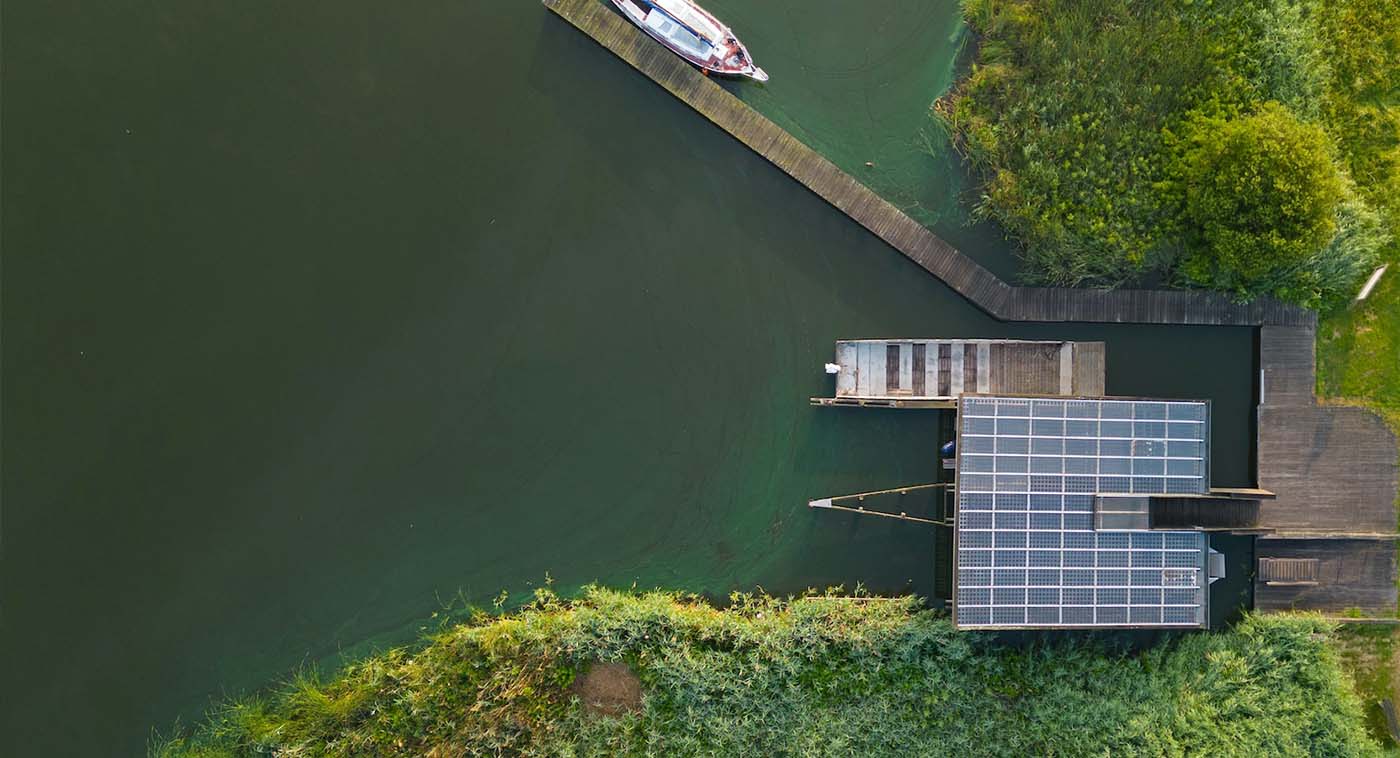Picture this: Floating solar energy, in the form of solar panels afloat on serene lakes and shimmering reservoirs, quietly generating clean energy while preserving precious land resources. It’s not science fiction; it’s the reality of floating solar parks, and they’re making waves in the world of renewable energy.
Renewable energy presents floating solar energy
In the quest for sustainable energy solutions, floating solar parks have emerged as eco-friendly champions. These aquatic marvels not only harness the power of the sun but also make a compelling case for environmental stewardship. The global race for available land is intensifying, making space a coveted resource. Floating solar parks offer a smart solution by efficiently using water surfaces, ensuring that land remains available for agriculture, housing, and future generations.
Beyond land conservation, floating solar parks perform another incredible feat. Research from the National Renewable Energy Laboratory (NREL) highlights their ability to curtail water evaporation by up to 70%. This dual-purpose approach not only generates energy but also protects our precious freshwater resources.
Some of the leading examples of floating solar farms
Cranfield University in the United Kingdom established a floating solar farm on a local reservoir. This project, known as the “Cranfield University Floating Solar Test Bed,” aims to research and develop floating solar technologies. It serves as an example of academic and scientific research into the feasibility and benefits of floating solar installations.
Singapore’s Tengeh Reservoir which is Singapore’s national water agency (PUB), implemented one of the largest floating solar energy projects in the world on the Tengeh Reservoir. This initiative reflects the government’s commitment to harnessing renewable energy sources. The floating solar panels not only generate clean energy but also help reduce water evaporation from the reservoir, preserving precious freshwater resources.
The Hydrelio Floating Solar Park, located in France, is an example of a commercial-scale floating solar installation. It showcases the potential for renewable energy companies to invest in floating solar projects to generate clean electricity while conserving land resources.
Efficient and affordable bifacial solar panels
Unlocking the full potential of floating solar parks relies on the power of bifacial solar panels. These technological wonders capture sunlight from both sides, delivering a dazzling 10-30% boost in energy output compared to traditional panels.
The European Photovoltaic Industry Association (EPIA) reports that the decreasing cost of bifacial panels is democratizing energy production. This affordability factor is igniting a solar renaissance, one floating panel at a time.
Battery-powered energy storage
The sun doesn’t always shine, but with energy storage solutions like large-scale batteries, it doesn’t have to. These robust systems store excess energy generated during sunny spells and unleash it during cloudy days or peak demand hours, ensuring a steady power supply.
Energy storage is the unsung hero of grid stability. According to the International Renewable Energy Agency (IRENA), it reduces the need for fossil-fuel backups, aligning with global efforts to decarbonize energy production.

Floating solar energy: Can this be an efficient community solar alternative?
As reported by the Solar Energy Industries Association (SEIA), these shared solar projects foster a sense of ownership and community engagement, all while boosting local economies. Floating solar energy, particularly in the form of community solar gardens, offers communities a unique pathway to clean and renewable power while fostering a sense of collective responsibility and engagement. These projects not only enable diverse stakeholders to participate in the clean energy transition but also leverage the benefits of floating solar technology, even if they lack suitable rooftops for traditional solar panels. Key benefits of community-based floating solar initiatives include:
Ownership and engagement
Community members become active participants in energy production through floating solar arrays, leading to increased engagement and stronger community bonds.
Economic growth
Floating solar projects create job opportunities related to their installation, maintenance, and operation. These jobs stimulate local economies, and revenues generated can fund infrastructure improvements and community programs.
Inclusivity
Floating solar technology extends clean energy benefits to those without access to suitable rooftops or land for solar panels. This inclusivity promotes equitable energy distribution and environmental justice.
Environmental stewardship
Floating solar arrays contribute to a healthier local environment by reducing carbon emissions and conserving water resources. This positive environmental impact enhances the quality of life for community members.
AI technology and solar parks
The marriage of artificial intelligence (AI) and solar parks is revolutionizing the energy landscape. AI algorithms can predict energy generation with uncanny accuracy, optimize maintenance schedules, and ensure these floating marvels operate at peak efficiency. The National Renewable Energy Laboratory (NREL) highlights AI’s role in predictive maintenance, reducing operational costs and enhancing overall system performance.
Scaling up floating solar parks
From Japan’s Yamakura Dam Solar Power Plant to China’s colossal installations and the Far Niente Winery in the United States, these real-world examples prove that floating solar parks are not a novelty but a global movement.
Government policies and incentives are pivotal in propelling solar park development. Subsidies, tax incentives, and ambitious renewable energy targets set the stage for accelerated investment in clean energy projects.
While floating solar parks hold immense promise, they are not without challenges. Environmental considerations and innovative maintenance solutions are areas of active research to ensure their continued success. A company that continuously evaluates and works to develop the efficiency of solar parks is the Swedish company EcoTech solar energy, whose primary services involve the procurement and design of solar energy. If you are interested in solar energy in general or solar farms, visit www.ecotechsolenergi.se or www.energinyheter.com.
In summation, the world of floating solar parks is a captivating journey toward a sustainable energy future. They’re not just power plants; they’re guardians of our land and water, champions of efficiency, and community builders. As these floating wonders make headlines and harness the sun’s energy, they signal a cleaner, brighter future for us all.



